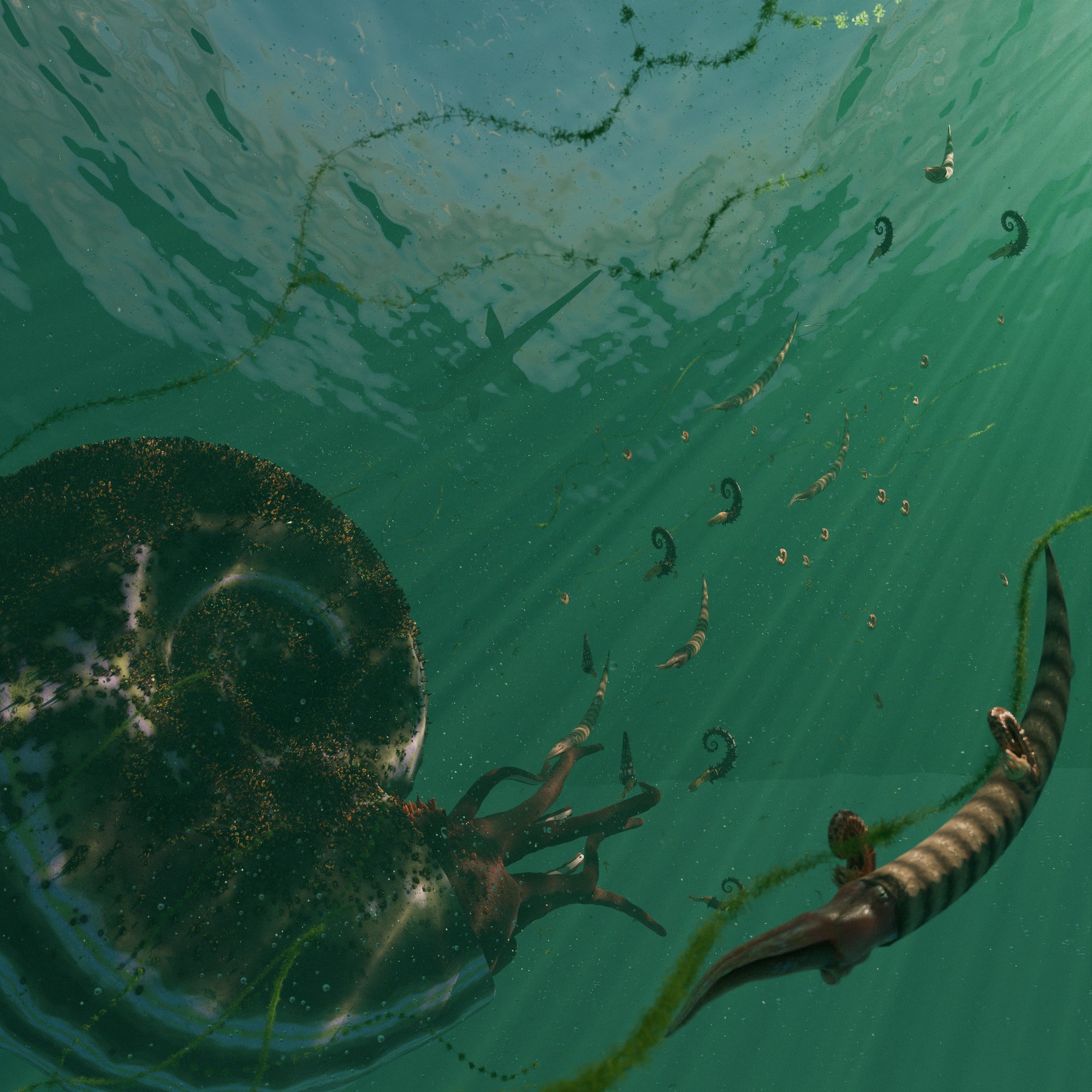
New research challenges the view that ammonites declined before their extinction 66 million years ago, showing instead that they remained globally diverse and robust. The research highlights that their extinction was influenced by a range of geographic and environmental factors, rather than an inevitable outcome. Ammonites bask in the Late Cretaceous sun. Credit: Artwork by Callum Pursall
A recent study used museum collections to map the global diversity of ammonites before they went extinct. The findings reveal that ammonites did not decline before they went extinct along with non-avian dinosaurs 66 million years ago.
A new study published in the journal Nature communicationunder the direction of paleontologists from the University of Bristol in collaboration with international researchers, including Dr. Austin Hendy, Curator of Invertebrate Paleontology at the Natural History Museum of Los Angeles County, reveals that ammonoids were still prevalent throughout the world during the Late Chalkcontrary to the assumption that they declined in numbers before their extinction.
The new study, made possible by museum collections, compared the diversity of species around the world just before their extinction, revealing for the first time the complex evolutionary history of their final chapter.
Ammonites, marine mollusks often recognizable by their coiled shells, are one of the great icons of paleontology. They thrived in the Earth’s oceans for over 350 million years, until they went extinct in the same accidental event that wiped out the dinosaurs 66 million years ago. However, some paleontologists have argued that ammonites (the last major lineage of ammonites) were already declining in diversity long before their extinction at the end of the Cretaceous, and that their demise was inevitable.
“Ammonites had an astonishing evolutionary history. With their formidable shells and powerful tentacles, they innovated the act of swimming. They could grow to the size of a car or to just a few millimeters in diameter. They played equally diverse roles in their ecosystems, from predators at the top of the food chain to filter feeding on plankton,” Hendy said..
Challenges in studying biodiversity
“Understanding how and why biodiversity has changed over time is a real challenge,” said lead author Dr Joseph Flannery-Sutherland. “The fossil record tells us part of the story, but it is often an unreliable narrator. Patterns of diversity may simply reflect patterns of sampling, essentially where and when we found new fossils kindrather than actual biological history. Analyzing the existing fossil record of Late Cretaceous ammonites as if it were the complete, global story is likely why previous researchers thought they were in a long-term ecological decline.”
To address this issue, the team created a new database of Late Cretaceous ammonite fossils to fill in the gaps in their data. “We used museum collections to provide new sources of specimens rather than just relying on what was already published,” said co-author Cameron Crossan, who graduated from the University of Bristol’s MSc Palaeobiology program in 2023. “This way, we could be sure we were getting a more accurate picture of their biodiversity before their total extinction.”
Using their database, the team then analyzed how ammonite speciation (the formation of different new species) and extinction rates varied across different parts of the world. If ammonites were in decline during the Late Cretaceous, their extinction rates would have generally been higher than their speciation rates, wherever the team looked. Instead, the team found that the balance between speciation and extinction changed, both over geologic time and across geographic regions.
“These differences in ammonoid diversification across the globe are a key part of why their Late Cretaceous story has been misunderstood,” said lead author Dr James Witts from the Natural History Museum in London. “Their fossil record in parts of North America is very well sampled, but if you look at that alone you would think they were struggling, whereas in other regions they were thriving. Their extinction was really a chance event and not an inevitable outcome.”
Environmental factors versus competition
So, what was responsible for the continued success of ammonites in the Late Cretaceous? To answer this question, the team looked at possible factors that could have caused their diversity to change over time. In particular, they were interested in whether their speciation and extinction rates were driven primarily by environmental conditions such as ocean temperature and sea level, or by biological processes such as predator pressure and competition among ammonites.
“What we found was that the drivers of ammonite speciation and extinction were as geographically diverse as the rates themselves,” said co-author Dr. Corinne Myers of the University of New Mexico. “You couldn’t just look at their entire fossil record and say it was all driven by changing temperatures, for example. It was more complex than that and depended on where in the world they were living.”
“Paleontologists are often fans of ready-made stories about what drove changes in a group’s fossil diversity, but our work shows that things are not always that simple,” concluded Dr Flannery Sutherland.
Reference: “Late Cretaceous ammonoids show that drivers of diversification are regionally heterogeneous” by Joseph T. Flannery-Sutherland, Cameron D. Crossan, Corinne E. Myers, Austin J.W. Hendy, Neil H. Landman and James D. Witts, June 27, 2024, Nature communication.
DOI file: 10.1038/s41467-024-49462-z
